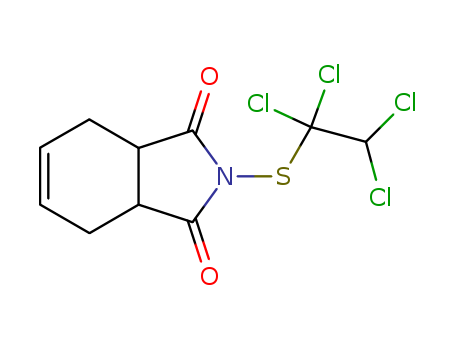- Chemical Name:Captafol
- CAS No.:2425-06-1
- Deprecated CAS:30017-05-1,61913-12-0
- Molecular Formula:C10H9 Cl4 N O2 S
- Molecular Weight:349.065
- Hs Code.:29305000
- European Community (EC) Number:219-363-3
- ICSC Number:0119
- DSSTox Substance ID:DTXSID4020242
- Nikkaji Number:J3.026K
- Wikipedia:Captafol
- Wikidata:Q63088167
- NCI Thesaurus Code:C77381
- Metabolomics Workbench ID:45028
- ChEMBL ID:CHEMBL1893263
- Mol file:2425-06-1.mol
Synonyms:captafol;captafol, (cis)-isomer;captefol;captofol;Difolatan;merpafol;N-(tetrachloroethylthio)tetrahydrophthalimide





